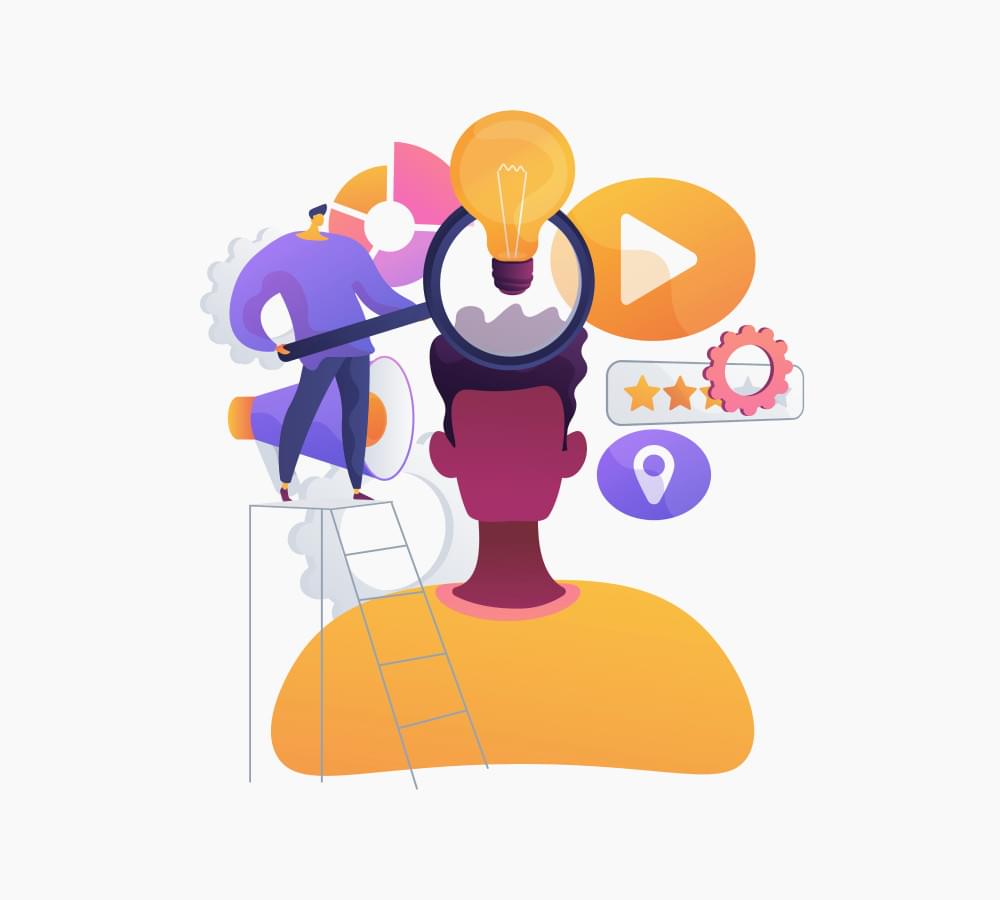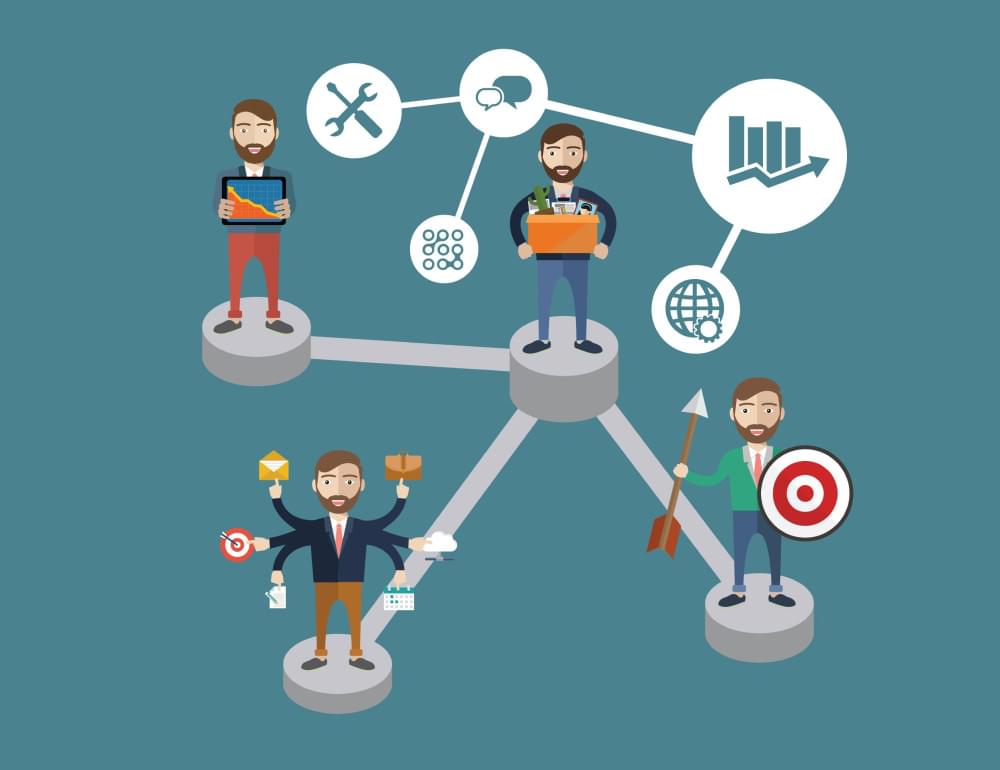
Personalized Communication to retain clients in 2024

Have you ever experienced the thrill of receiving an e-mail or advertisement that feels tailor-made just for you? Perhaps it offered a discount on a product you were eyeing or showcased a deal on something you’ve previously purchased. That’s the incredible power of effective personalized communication strategies - the art of crafting messages that resonate with customers based on their behaviors, preferences, and past interactions.
What is Personalized Communication?
Personalized communication takes marketing to a whole new level by leveraging customer data from databases and employing it across various media channels. This allows marketers to cut through the clutter of today’s overwhelming marketing messages and capture the attention of their intended audience.
In this article, we will explore the vital role that personalized marketing plays in customer retention management and delve into effective personalized communication strategies for implementing it in your own business. By understanding the value of personalized tactics and leveraging targeted communication, you can optimize customer engagement and foster stronger, long-lasting relationships with your valued clientele.
Importance of Personalized Communication in Customer Engagement and Retention

Picture this: you walk into a store, and the salesperson greets you by name, remembers your previous purchases, and offers tailored recommendations based on your preferences. How would that make you feel? Valued, understood, and more likely to make a purchase, right? Well, that’s the magic of personalized marketing and customer retention strategies ‘Customer retention strategies’).
So, how exactly do personalized communication and customer retention go hand-in-hand? It’s simple. When you take the time to tailor your communication to each customer’s unique needs and preferences, you demonstrate that you value them as individuals. A study determined that 90% of customers buy from personalized customer service companies.
This personal touch creates an emotional connection that extends beyond a mere transaction, fostering a long-term relationship built on trust and understanding.
Effective personalized communication strategies include:
- Send Personalized E-mail Reminders
- Focus On What Resonates With Your Audience
- Use Customer Data Effectively
- Get The Consumer’s Feedback
- Cater Strategies To Each Specific Audience
- Try To Scale The Personal Touches
- Enable Personalization Across Channels
Basis of Effective Communication
When it comes to ensuring customer engagement, effective communication holds the key. In any organization, communication with customers occurs at various touchpoints, spanning different roles within the company. In today’s competitive landscape, personalized communication is a game-changer. According to this research, 94% of marketers and 90% of agencies agree that personalization of the web experience is critical to current and future success. A communication optimization approach ensures customers feel valued, understood, and eager to return.
Fundamental Principles of Effective Communication
Mastering the fundamental principles of customer engagement is critical to enhancing the customer relationship. These principles act as a guiding light, helping businesses engage customers effectively at every stage of their journey. From the initial touchpoint to post-purchase interactions, below are the principles that lay the foundation for a successful personalized communication strategy:
Develop your Customer Engagement Strategy with User Journey Mapping
Imagine trying to navigate through a dense forest without a map. Chances are, you’ll end up lost and confused. The same principle applies to developing effective customer engagement strategies. If you don’t know your customers’ goals, how can you create meaningful customer relationships? That’s where a clear customer journey map comes into play. This powerful strategy allows you to visualize how customers progress through your product or service, anticipating the experiences they’ll encounter and the potential challenges they may face.
Related read: B2B Customer Journey Map
Drive Customer Engagement and Strengthen Relationships with Loyalty Programs
SaaS customers don’t make daily purchases. However, it’s crucial to stay at the forefront of their minds, ensuring that your brand is their go-to choice when they need a solution. How do you achieve this? By consistently adding value to every interaction your customers have with your brand.
One effective strategy for fostering this kind of relationship is through loyalty programs. This personalized tactic keeps customers motivated and strengthens their bond with your brand.
There are three kinds of customer loyalty programs:
- Points-based
- Referral-based
- Mission-based
Use Social Proof in Your Marketing Materials
Social proof is gaining momentum in customer engagement, especially among B2B buyers. You provide tangible evidence of your brand’s capabilities by showcasing testimonials and positive feedback.
This builds trust, assuages doubts, and instills confidence. In today’s competitive landscape, social proof is a valuable asset that validates your expertise and real-world success.
Re-engage Inactive Users with E-mail Marketing
Inactive users pose a challenge as they stop using your product or fail to perform value-based actions. But fear not, for you still have their e-mails as a valuable contact point. Engage customers through this medium, offering a compelling reason to revisit your app and rekindle their activity.
Whether it’s showcasing new features, generating FOMO, or providing exclusive discounts, entice them with what they’re missing out on.
Related: How to win back lost customers
How These Principles of Effective Communication Translate to Business and Customer Relationships
Acquiring SaaS customers is just the beginning the ultimate goal is to nurture long-term relationships that drive subscription renewals and maximize Customer Lifetime Value (LTV). According to a survey, marketers noticed a 20% increase in revenue generation when implementing personalized tactics. To achieve this, keeping customers engaged with your product and brand is crucial.
Targeted communication tactics play a pivotal role in achieving these objectives. Here’s why you should prioritize them:
- Enhance the Overall Customer Relationship
- Foster Customer Retention and Customer Loyalty
- Drive Revenue
Implementing Personalized Communication Strategies

In the age of skeptical consumers, innovative brands understand the impact of personalized tactics. Generic mass-marketing campaigns no longer cut it.
To truly captivate your audience, you must go the extra mile by designing personalized communication for smaller, more specific consumer niches.
Discover the art of implementing personalized communication tactics and unlock the potential of engaging today’s savvy consumers:
Identify Target Audience
The following steps can help you realize your target audience:
Step #1: Analyze Your Customer Base and Carry Out Client Interviews
Understand your current buyers by examining their demographics, interests, and location. Engage with them through social media or surveys to gather valuable insights.
Step #2: Conduct Market Research and Identify Industry Trends
Explore market research in your industry to discover gaps in service and determine where your product can provide unique value.
Step #3: Analyze Competitors
Learn from your competitors’ strategies, target audience, and channels used for selling. Gain insights into their approaches to refine your own tactics.
By following these steps, you can identify and connect with your target audience, paving the way for impactful marketing campaigns and business success.
Understanding Customer Preferences
Continuously Revise: Through data gathering and customer interactions, refine your understanding of target audiences, optimizing and honing personas for optimal results.
Use Google Analytics: Leverage the power of Google Analytics to gain valuable insights about your website visitors, such as their preferred channels and engaging content, enabling data-driven decisions for effective media planning.
Customizing Message Content
Use First Name Personalization In E-mails
Personalize your e-mails by incorporating the recipient’s first name in the subject line or body copy. This simple personalized tactic helps create a connection and increases sixfold the likelihood of a subscriber engaging with your content, bringing you closer to a sale.
Appeal To Customers Culture Recognize
The importance of culture marketing in today’s diverse demographic landscape. Blend behavioral and survey research to understand consumer behavior and preferences accurately, allowing you to craft messages that strike the perfect balance and resonate with their specific culture.
Using Demographics Data
Utilize audience demographic data to gain insights into who your audiences are and their industry affiliations. This information, including company name, size, job title, and location, enables targeted communication tactics such as customized landing pages, location-specific coupons, or industry-specific webinars to reach the right people at the right time.
Choosing the Right Channel for Communication
Crafting a successful channel strategy begins with aligning it with your business objectives. As you embark on this journey, be prepared to adapt and evolve. Stay attuned to emerging trends, adding and utilizing channels that resonate with your customer relationships. Here are a few channels below to identify which channels are best suited for your communication objectives:
- Central Communication: Press Release, E-mail, Memo, Internet Post, Media Interview, Press Conference
- Mobile and Social Media Updates: Company Blogs, SMS Mobile, Company Facebook, Company Twitter
- Enabling Advocates: Employees, Suppliers, Customers
- Social Media Participation: Discussion Forums, Blogs, Twitter, YouTube
Monitoring and Adapting the Strategy
Several KPIs can tell you how well your customer engagement strategies are performing. You’ll be more successful if you regularly track them and iterate based on the results.
The metrics for measuring customer engagement:
- Customer Engagement Score (CES): This tells you how engaged your existing users are. This metric is measured by determining the most critical events on your app, assigning engagement scores to each event, and calculating the sum of all the event values.
- Retention Rate: The percentage of customers retained over specific periods.
- Active Users: The number of active interactions by your users. This is measured daily (DAU) or monthly (MAU).
- Number of Sessions per User: Tells how frequently people revisit your product by calculating the average number of sessions per user.
- Time Spent in the Product: Tells each visitor’s average time on your tool per day, week, or month.
Tools and Technologies for Personalized Communication

From advanced customer relationship management (CRM) platforms to artificial intelligence (AI) chatbots, the tools available for personalized communication are vast. Leverage customer data to improve retention, implement targeted e-mail marketing campaigns, and utilize machine learning algorithms to tailor content and messaging. Discover the transformative potential of these tools and elevate your effective communication strategies game to new heights.
Churnfree - Establish Long-Term Customer Relations by Reducing Churn
AI-powered Churnfree empowers businesses to enhance customer retention and reduce churn by 46%. Furthermore, it offers customizable cancellation flows that win back customers and increase their lifetime value.
With personalized and dynamic offers based on tenure, usage, and other targeting parameters, Churnfree ensures tailored solutions for maximum impact.
Moreover, real-time analytics enable seamless churn management, allowing businesses to gather valuable customer feedback and insights.
Pros:
- Easy Integration for your preferred payment processors
- 14-day free trial
- Full compliance with international user privacy and data protection laws
- Simple and intuitive editor for complete customization freedom.
Cons:
- It may not be suitable for some businesses
Proof - Web Personalization Solution Tool
Proof is one of those website personalization tools that are AI-based to help businesses improve conversions and increase revenue generation.
Pros:
- A fast-loading script that’s easy to install
- Intuitive, user-friendly dashboard
- Amazing customer support
Cons:
- No free plan
- The changeover from the free trial to paid plans isn’t transparent
- Expensive paid plans
Clearbit - Web Content Personalization System
Clearbit is a powerful B2B personalization and market intelligence tool that helps businesses track and target their ideal prospects with laser-targeted and precisely tailored campaigns for maximum conversion outcomes.
Pros:
- Convenient Google Chrome extension
- Fairly accurate prospecting data
- Decent integration capabilities
Cons:
- Expensive for smaller businesses
- UI may be challenging to navigate
- For specific audience types, low match rates may occur
Idomoo - Image and Video Personalization Tool
Idomoo is an image and video personalization platform enabling businesses to create personalized videos and images for their prospects and customers.
Pros:
- Automated personalization (image & video) & marketing at scale
- Increases customer retention through higher engagement
- A/B testing to see what works and what doesn’t
Cons:
- Using customer data for personalization may raise privacy concerns
- Learning curve and training involved
- It may not be suitable at all times and for all businesses
5 Case Studies of Successful Personalized Communication
“Real-life examples of successful personalization” encompass the remarkable instances where companies have embraced personalized tactics and reaped impressive results. By exploring these examples, you can glean actionable ideas and learn from the triumphs of others.
Discover the transformative potential of personalization through these real-life success stories and unlock the keys to creating tailored experiences that captivate audiences and drive remarkable business growth:
Amazon
The e-commerce giant Amazon leverages customer data and machine learning algorithms to deliver personalized product recommendations and targeted marketing campaigns. This strategic approach has propelled customer engagement and boosted sales.
Netflix
The renowned streaming platform Netflix taps into customer data like viewing history and ratings to curate personalized content recommendations. By tailoring their offerings, Netflix has achieved higher retention rates and increased customer engagement.
Spotify
The popular music streaming service Spotify harnesses customer data, including listening history and preferences, to deliver personalized music recommendations. This tailored approach enhances customer satisfaction and fosters deeper engagement.
Starbucks
Starbucks, the coffeehouse chain, capitalizes on customer data, encompassing purchase history and location, to offer personalized promotions and tailored rewards. Additionally, their mobile app enables customers to conveniently order ahead and make payments through their smartphones, elevating the personalized experience.
Nike
Nike, the global sports apparel brand, taps into customer data like purchase history and browsing behavior to retain customers and recommend products. This strategy has driven heightened customer relationships and sales.
3 Pitfalls to Avoid in Personalized Communication
When implementing personalized communication strategies, businesses must be cautious of pitfalls. Avoid privacy breaches, misleading claims, and unauthorized data usage. By adhering to regulations and building trust, you can harness the power of personalized communication.
Prioritizing the Sale Over the Customer Relationship
In the conquest of B2B sales, it’s too common for professionals to prioritize closing the deal at the expense of building relationships. Surprisingly, approximately 40% of B2B buyers struggle with establishing supplier relationships when sourcing from the Internet.
Focusing solely on the sale can lead to alienation and missed opportunities. A customer may make a quick purchase, but what if nurturing that relationship would yield greater value over time?
Tip: Customer Relation Building for Successful Conversion:
To build customer relationships, providing value to your prospects is crucial. Engage in active listening, asking thoughtful questions to uncover pain points, understand their needs and goals, and tailor your personalized communication strategy accordingly.
Pressuring Your Prospects
Prioritizing the sale can inadvertently pressure prospects, potentially pulling customers into the process. Instead, aim for a genuine connection by giving them the time and space to share their needs. Cultivating this deeper relationship enhances customer lifetime value.
Tip: How to Master the Art of Being Present without Being Pushy:
To strike the perfect balance, be patient, approachable, and resourceful. Listen actively, take notes, and resist the urge to jump into selling mode. When it’s time to discuss the sale, emphasize the urgency of addressing their pain points. And if they’re hesitant, offer a cost-free alternative to leave a positive impression and encourage reciprocity.
Neglecting Your Current Clients
In seeking new opportunities, B2B sales and marketing teams often overlook their current clients. While attracting new business is essential, maintaining solid relationships should never be neglected.
Tip: Personalized Communication to Retain Customers:
As a sales professional, you are often the face prospects trust, and as a marketer, your role extends beyond the initial purchase. Remember, the buyer’s journey continues, and your commitment to nurturing existing clients is crucial for sustained success.
Future of Personalized Communication and Marketing: Meeting Evolving Customer Expectations
In today’s dynamic landscape of customer expectations and ever-evolving marketing technology, personalized marketing has emerged as a game-changer for brands. A study in Accounting and Business Research revealed that customers now anticipate tailored communication, enhanced experiences, and seamless consistency across various channels.
Fortunately, leveraging automation technology empowers brands to individualize effective communication strategies for each customer. With a plethora of options at your disposal, you can create personalized experiences that leave a lasting impact and build strong customer relationships.

